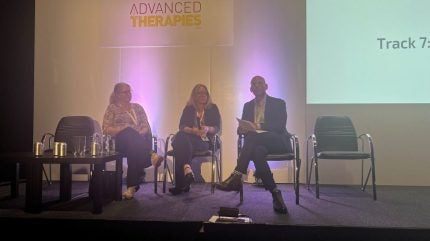
While the science behind specialised gene therapies continues to develop at a rapid rate, in neurodegenerative conditions the profound lack of understanding of the disease complexity poses a challenge, say experts.
At a panel focused on gene therapies for the brain at the Advanced Therapies conference, which took place on 19-20 March in London, UK, executives from several biotechs developing therapies in this space took to the stage to discuss how they are tackling these challenges.
Eric Michael David, CSO of the US-based BridgeBio Gene Therapy, said that although there is tremendous progress in the gene therapy space, it is still early days. Issues of gene therapy delivery to the brain regions, potential re-delivery and production of better and less immunogenic viral vectors, or even non-viral vectors still need to be addressed.
With regards to the issue of coverage of brain tissue when delivering gene therapy to the brain, Liz Ramsburg, head of Neuroscience Research at the gene therapy-focused biotech Spark Therapeutics, said the volume and rate of infusion and surgical trajectory are more important parameters in reaching the target brain areas compared to capsid types.
Discovering an effective capsid capable of targeting the brain while penetrating the blood-brain barrier and reaching deep nuclei without affecting other areas in the body can be challenging she said. Additionally, Ramsburg stressed the necessity for cost-effective treatment methods to address conditions such as Alzheimer’s, Parkinson’s, and Huntington’s disease: “If you use intravenous (IV) infusions as a delivery method as they are now, you have to give patients a huge volume, which gets very expensive.” Without cost-effectiveness, providing treatment to a large number of patients would be financially unfeasible.
Karin Agerman, chief scientific officer of the Swedish biotech CombiGene, agreed with Ramsburg and emphasised the need to conduct studies in large animal models to test the delivery coverage of target brain areas. Using an example from her own research, she highlighted the differences in the hippocampal structure between rodents and humans, stressing the need for large animal model studies to accurately mimic human anatomy. Since non-human primate studies are costly, she referred to the use of other large animal models, such as sheep, to consider structural differences while evaluating delivery methods in the brain. She stated that it is not sufficient to look at small animal models when assessing delivery of therapies in the brain, while advocating for the use of both small and large animal models in research.
Access the most comprehensive Company Profiles on the market, powered by GlobalData. Save hours of research. Gain competitive edge.

Your download email will arrive shortly
We are confident about the unique quality of our Company Profiles. However, we want you to make the most beneficial decision for your business, so we offer a free sample that you can download by submitting the below form
By GlobalData
During the panel discussion, all speakers raised the issue of translatability of animal models, as a major challenge in central nervous system (CNS) disorder research. Agerman highlighted that in diseases such as amyotrophic lateral sclerosis (ALS), Alzheimer’s, and epilepsy, animal models often fail to accurately represent the human disease complexities. In such cases, she highlighted the importance of leveraging clinical opportunities, such as brain surgery in epilepsy patients, to conduct studies that demonstrate the effectiveness of potential treatments in humans, give valuable insights, enhance the translatability of their findings and improve the chances of successful clinical applications.
At the end of the discussion, panellists concluded that strategies for early diagnosis and treatment of neurodegenerative diseases should include the improvement of diagnostic tools to identify patients at risk. According to the speakers, industry and society must work together to develop and implement these strategies, including screening patients for early detection and newborn genome sequencing.

Sign up for our daily news round-up!
Give your business an edge with our leading industry insights.
